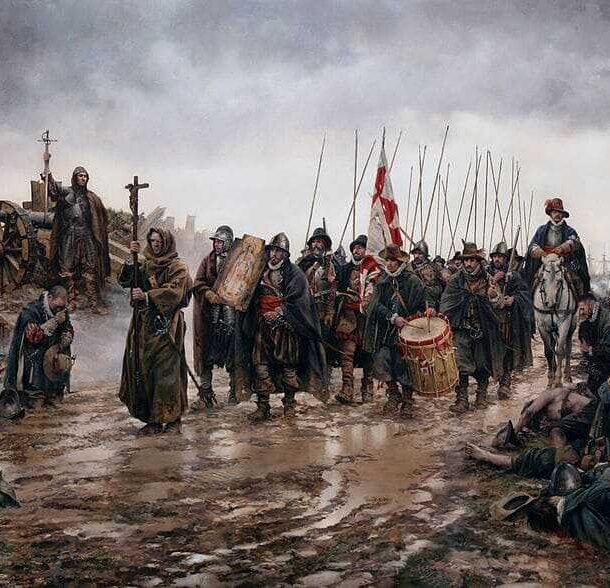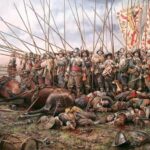
The Battle of Rocroi, depicted by Ferrer-Dalmau, is one of the best-known battles fought by the tercios during the Thirty Years’ War and is considered to be one of the most epic defeats that marked the turning point of the Spanish proto-army. The Spanish tercios withstood the pressure of their Dutch and French enemies while dealing with revolts in Portugal and Catalonia. To weaken French support for Catalonia, an invasion of France through the Ardennes was considered. Francisco de Melo, captain of the Flanders tercios, decided to take the fortress of Rocroi, thinking that the French would avoid the battle in the open. However, the French manage to break through the centre of Melo’s army, separating the Spanish infantry from the Italian, German and Walloon tercios. The only survivors of the massacre were the Spanish and Italians. However, only the Spanish held out in battle and were abandoned by the Italians. The capitulations offered to respect the lives of the survivors, who in turn went out with their flags unfurled in formation and bearing arms, conditions that were given to the garrisons of the besieged strongholds, something unheard of on a battlefield. Rocroi was the end of the undefeated Spanish military machine. One of the survivors of the tercio, when asked about the total number of the army, replied insolently: “count the dead”.
Collection: Images
Project: 5. Power and powers in the history of Europe: oligarchies, political participation and democracy., 6. Under a cloak of terror: violence and armed conflict in Europe.
Chronology: XVII
Scope: Secondary Education, Baccalaureate, University
Resource type: Image
Format: Oil on canvas
Source: Augusto Ferrer-Dalmau
Language: Spanish
Date: 1643
Owner: Álvaro Romero González (Modernalia)
Copyright: Augusto Ferrer-Dalmau
Abstract: The Battle of Rocroi, part of the Thirty Years' War, was the last stand of the tercios of the Spanish Monarchy
Image
Tags






